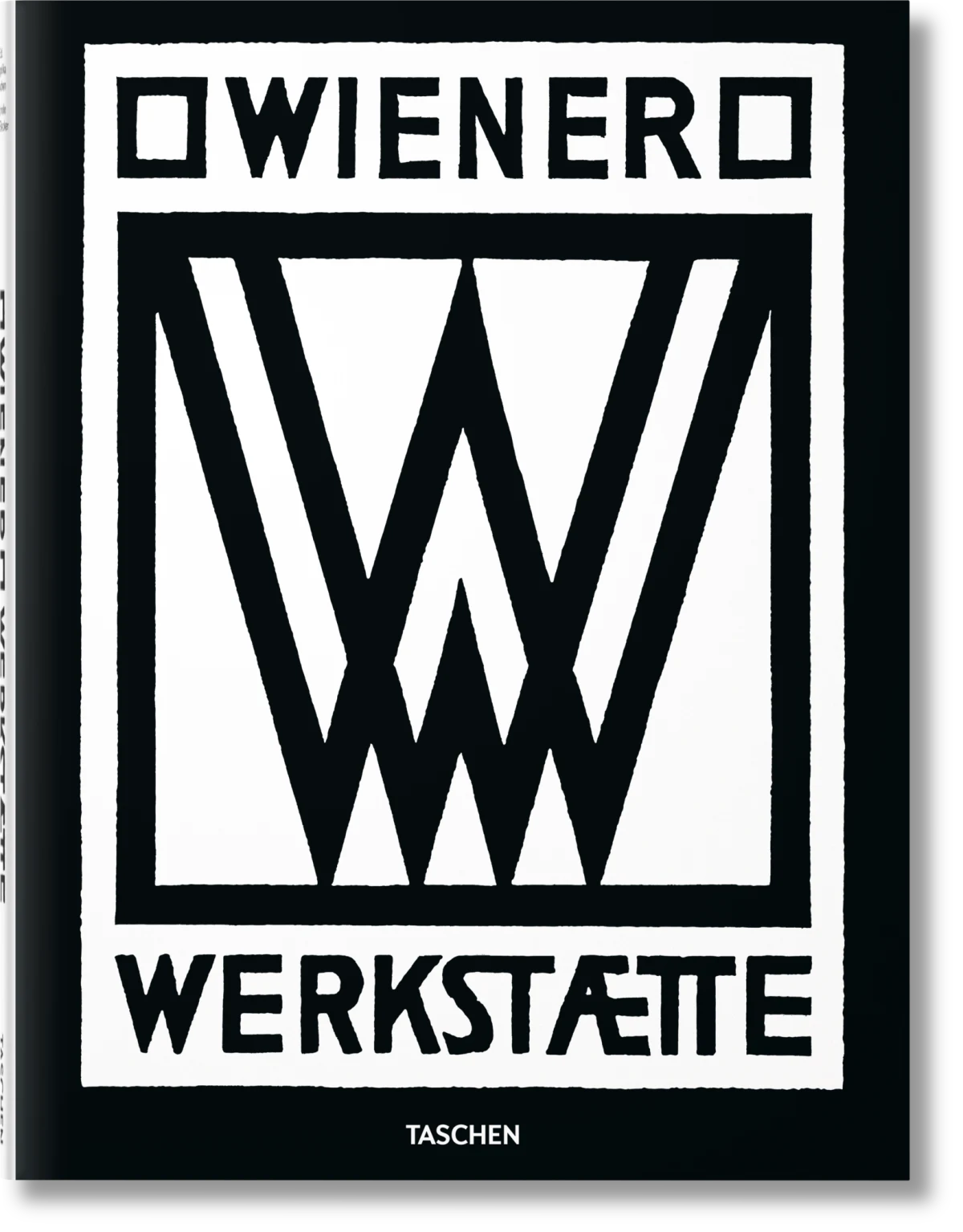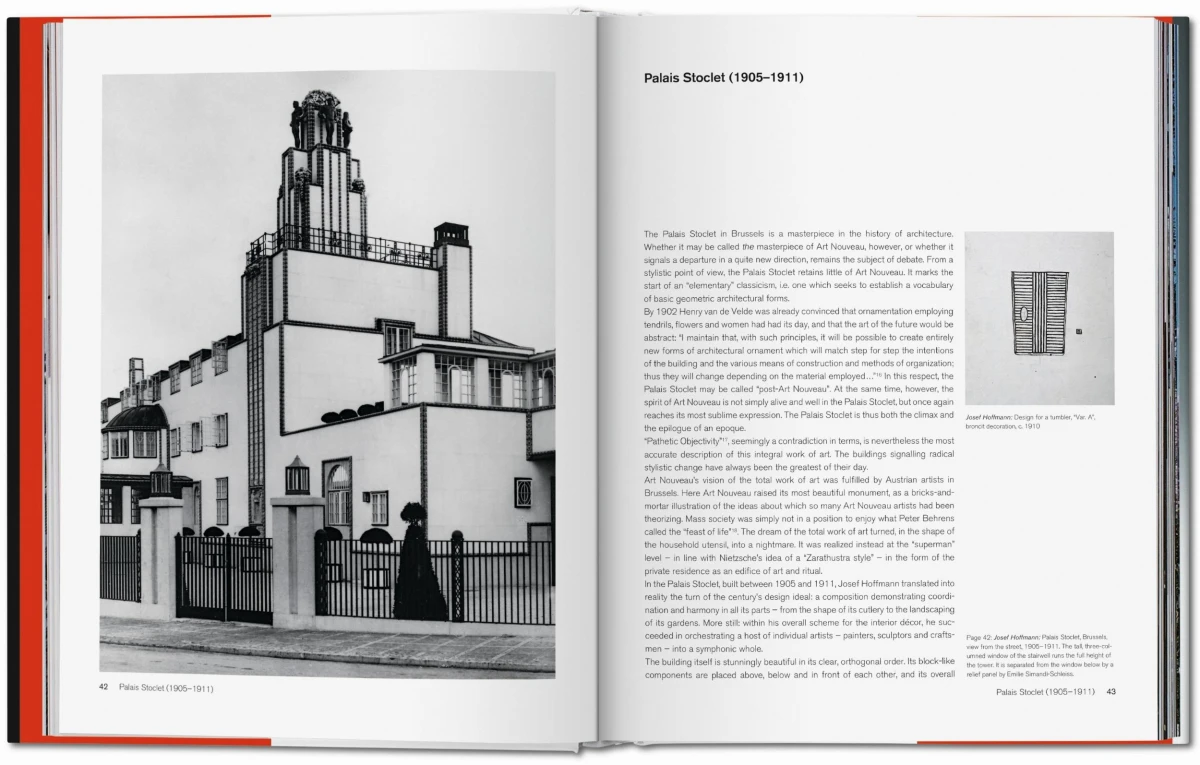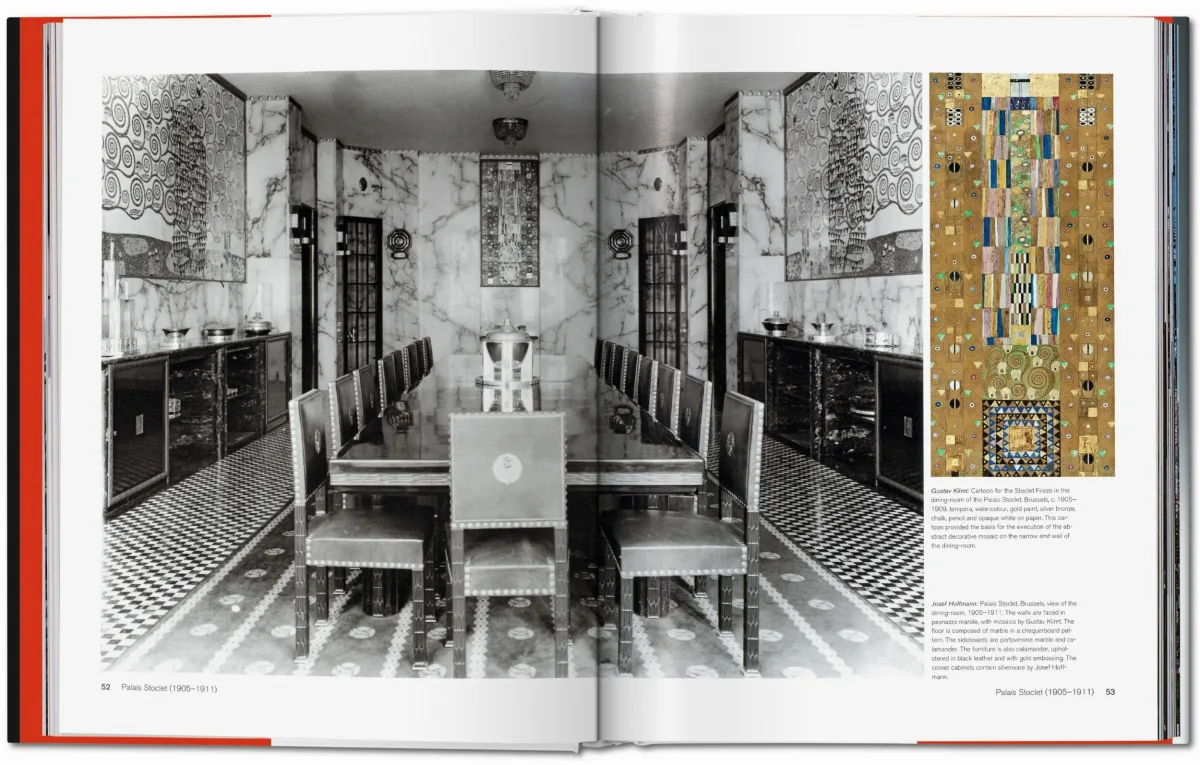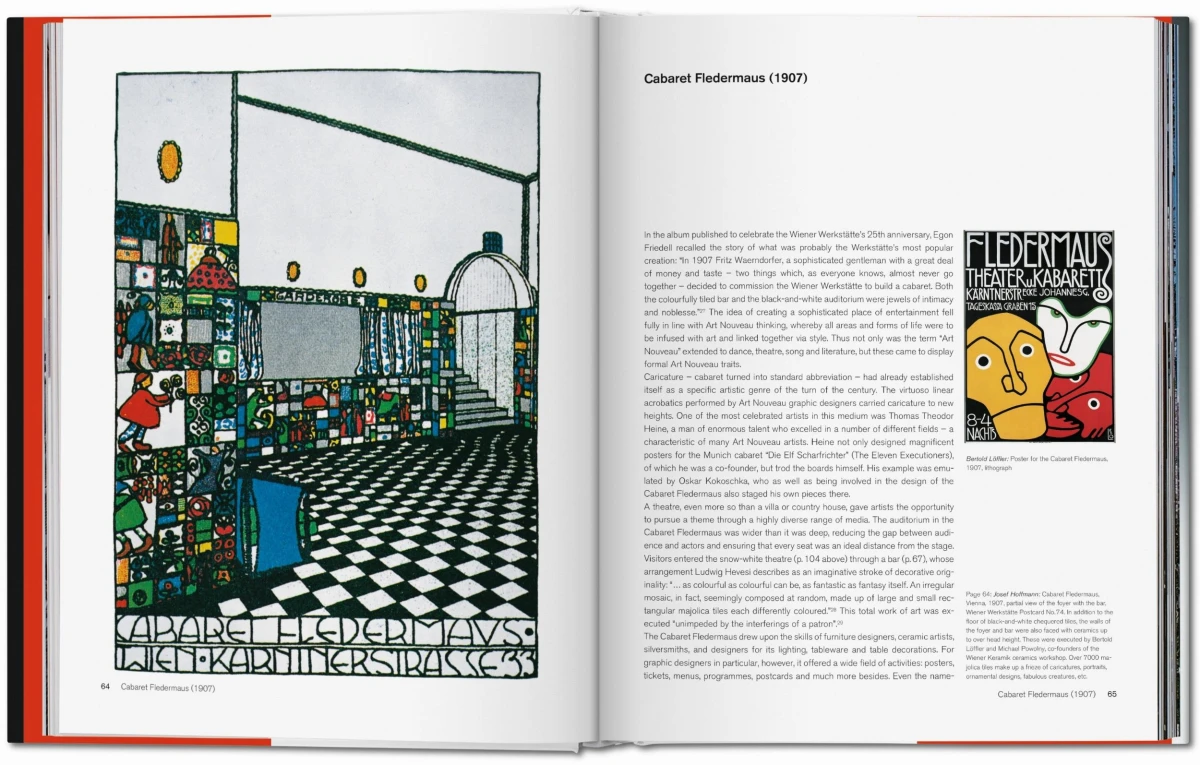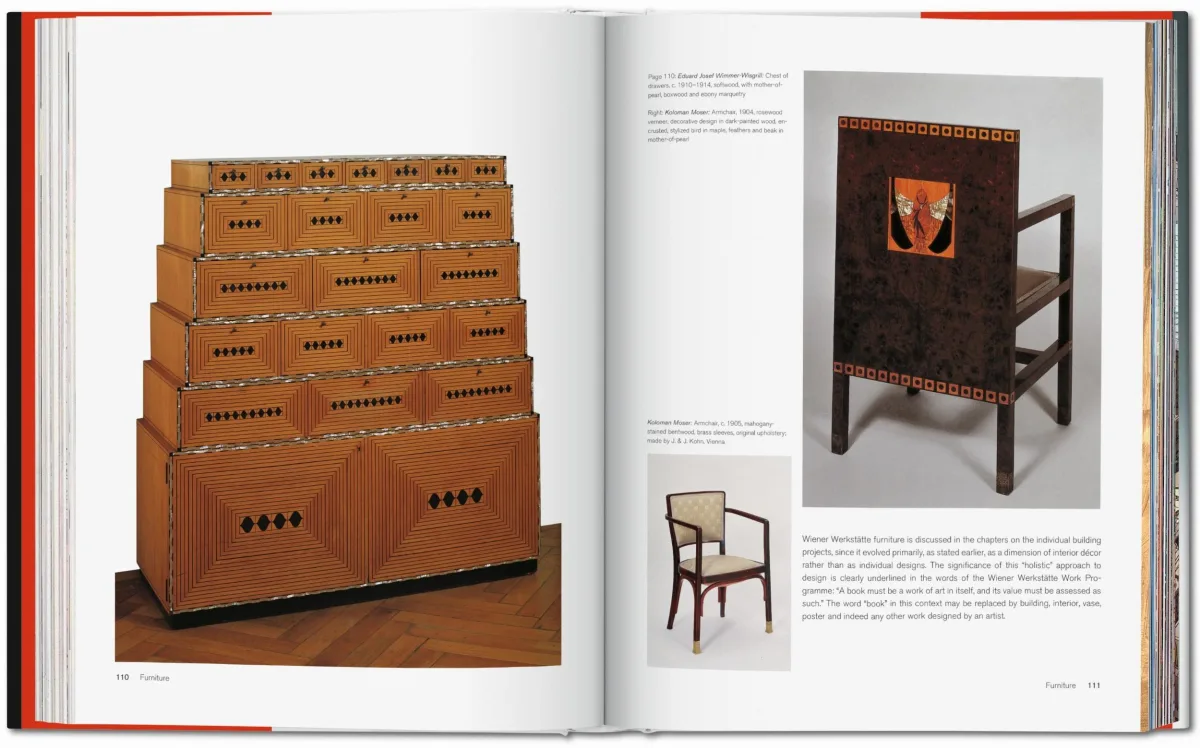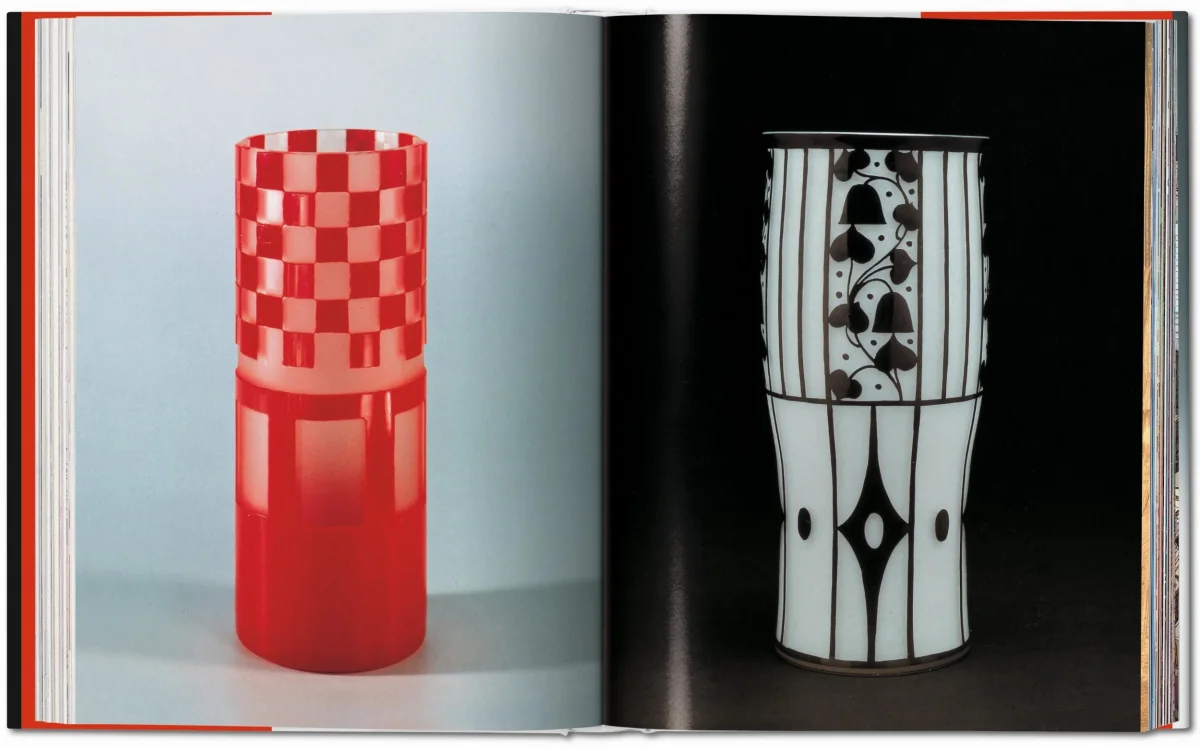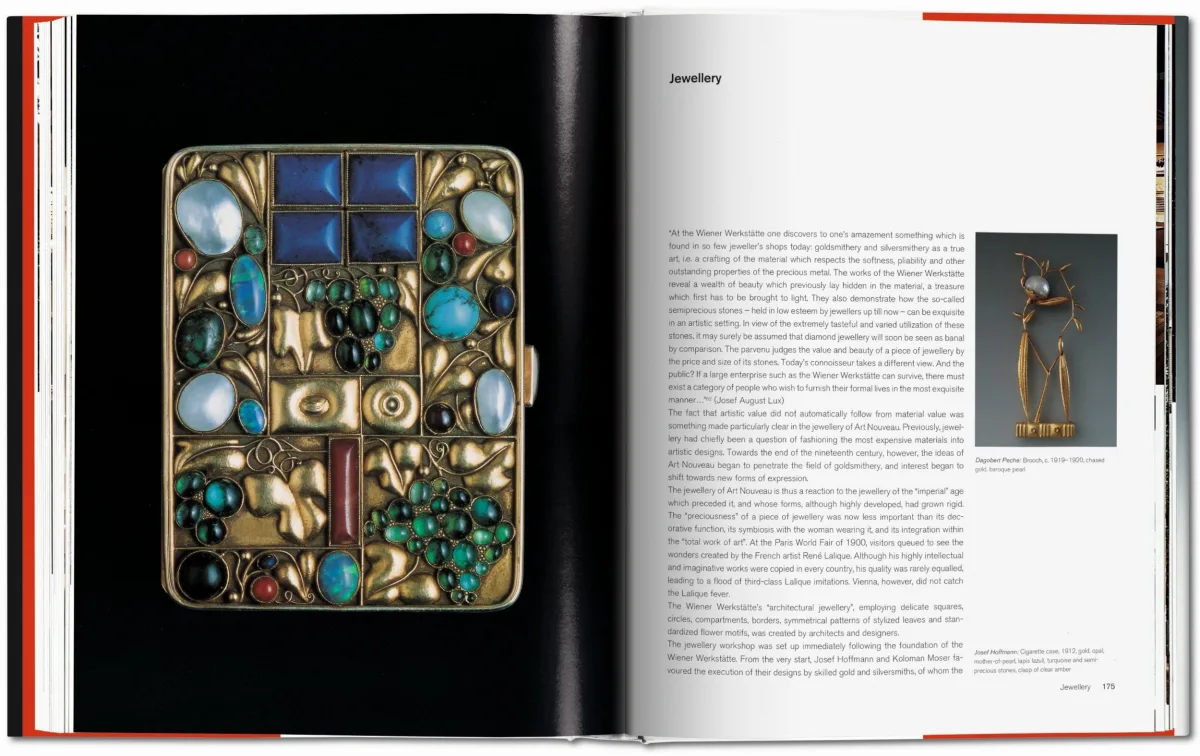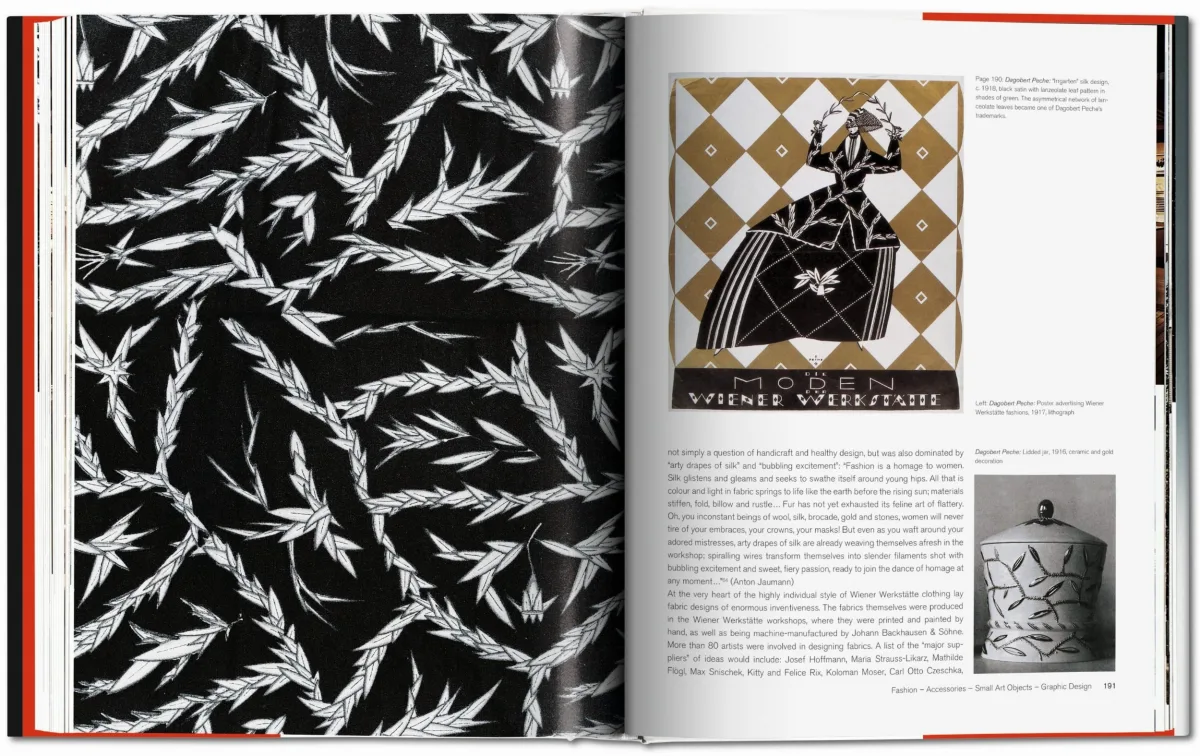1 / 9
Wiener Werkstätte
40Gioielli, ceramiche, mobili, moda e molto altro ancora sono racchiusi alla Wiener Werkstätte ("Officina di Vienna"). Questo centro di creatività, fondato nel 1903, è riconosciuto ancora oggi per la sua elevazione dell'artigianato rispetto a un mondo industrializzato, per il suo "stile quadrato" semplice ed elegante e per la sua ricerca di una "Gesamtkunstwerk", o opera d'arte totale, in cui tutti gli elementi di un ambiente rivestono un ruolo centrale.
Copertina rigida, 9.4 x 12.4 in., 4.20 lb, 240 pagine

Wiener Werkstätte
40Viennese vision
Creating the “total work of art”
The Wiener Werkstätte (“Vienna Workshop”) bears many hallmarks of a modern creative movement. Founded in 1903 by Josef Hoffmann, Koloman Moser, and Fritz Waerndorfer, this progressive alliance of artists and designers was particularly interested in challenging industrialised society with individual handcraftsmanship, and in bringing different facets of life into one unified, elegant artwork.
The workshop began life in three small rooms, but soon expanded to fill a three storey building with special departments for metalwork, leatherwork, and woodwork, as well as a book binder and a paint shop. Artists experimented with various materials such as gold, precious stones, and papier mâché and applied their simple, often geometric, designs across ceramics, textiles, typography, interior design, furniture, and fashion. In architectural commissions such as the Purkersdorf Sanatorium and the Palais Stoclet in Brussels, the group was able to realize its ideal of the Gesamtkunstwerk (“total artwork”), in which every detail of an environment was designed as an integral part of a coordinated whole.
Though the workshop lasted only 30 years, it enjoyed major commercial success, with outlets in Karlsbad, Marienbad, Zurich, New York, and Berlin. It also garnered designs from many of the leading artists of the epoch, including Gustav Klimt, Oskar Kokoschka,and Egon Schiele. Today, the Vienna Workshop is recognized for its comprehensive approach to artistic practice and its stylistic influence on Art Deco and Bauhaus.
The workshop began life in three small rooms, but soon expanded to fill a three storey building with special departments for metalwork, leatherwork, and woodwork, as well as a book binder and a paint shop. Artists experimented with various materials such as gold, precious stones, and papier mâché and applied their simple, often geometric, designs across ceramics, textiles, typography, interior design, furniture, and fashion. In architectural commissions such as the Purkersdorf Sanatorium and the Palais Stoclet in Brussels, the group was able to realize its ideal of the Gesamtkunstwerk (“total artwork”), in which every detail of an environment was designed as an integral part of a coordinated whole.
Though the workshop lasted only 30 years, it enjoyed major commercial success, with outlets in Karlsbad, Marienbad, Zurich, New York, and Berlin. It also garnered designs from many of the leading artists of the epoch, including Gustav Klimt, Oskar Kokoschka,and Egon Schiele. Today, the Vienna Workshop is recognized for its comprehensive approach to artistic practice and its stylistic influence on Art Deco and Bauhaus.
L'autore
Gabriele Fahr-Becker studied art history, archaeology, and philosophy, and gained her doctorate from Munich University in 1970 with a thesis on Art Nouveau. She has published numerous books on turn-of-the-century art.
L'editore
Angelika Taschen ha studiato storia dell’arte e letteratura tedesca a Heidelberg, conseguendo il dottorato nel 1986. Ha lavorato per TASCHEN dal 1987 al 2010 e ha pubblicato numerosi libri su svariati argomenti quali arte, architettura, fotografia, design, viaggi e lifestyle.
Wiener Werkstätte
Copertina rigida, 24 x 31.6 cm, 1.90 kg, 240 pagineScarica qui le immagini del prodotto
Non sono state ancora pubblicate recensioni per questo articolo. Sii il primo a valutare questo prodotto.

